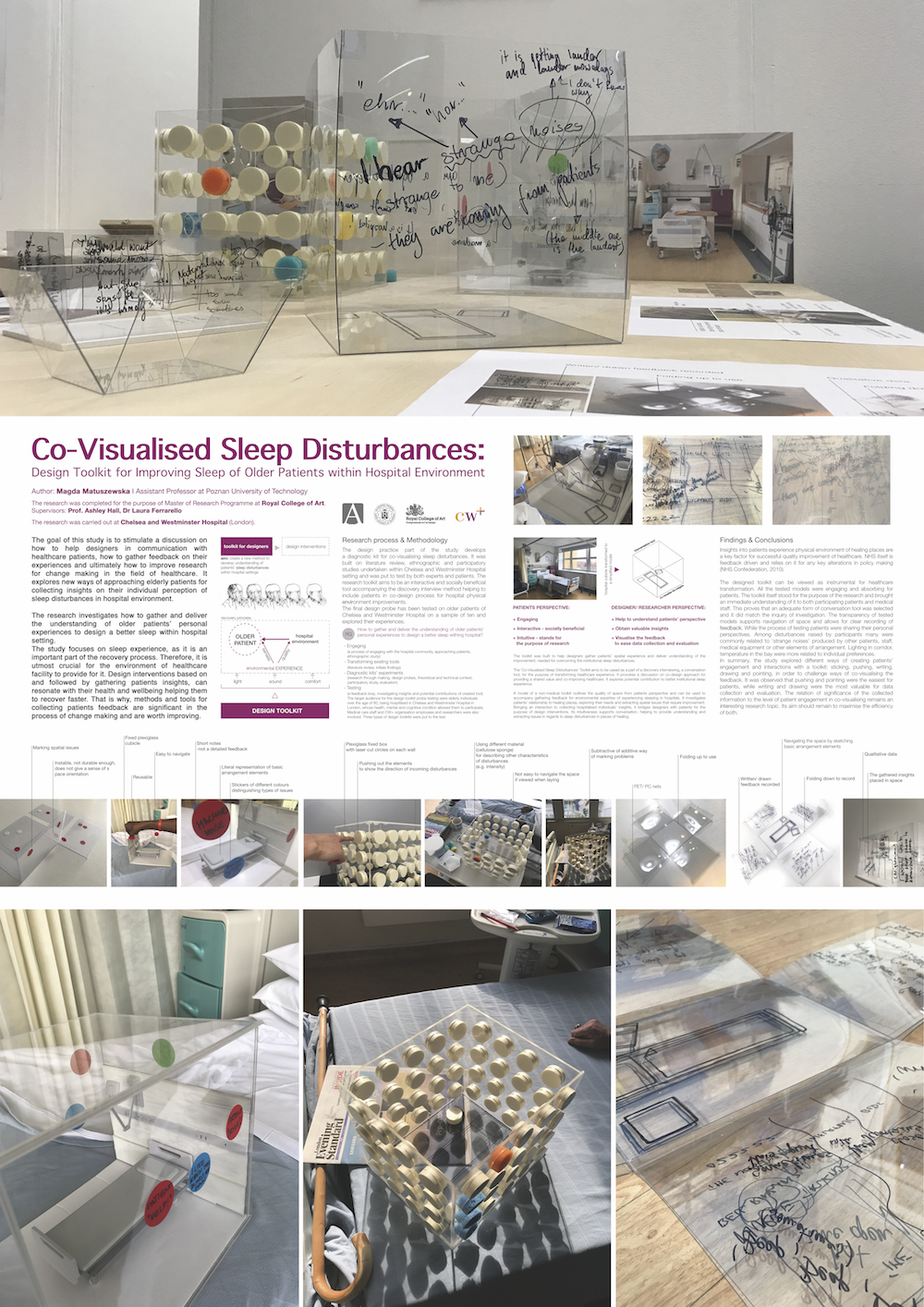Senior care / Quality improvement
European Healthcare Design 2018
Co-visualised sleep disturbances: design toolkit for improving sleep of older patients within hospital environment
By Magda Matuszewska | 08 Jun 2018 | 0
The goal of this study is to stimulate a discussion on how to help designers in communication with healthcare patients, how to gather feedback on their experiences and, ultimately, how to improve research for change-making in the field of healthcare.
Abstract
Co-visualised sleep disturbances: design toolkit for improving sleep of older patients within a hospital environment
The goal of this study is to stimulate a discussion on how to help designers in communication with healthcare patients, how to gather feedback on their experiences and, ultimately, how to improve research for change-making in the field of healthcare. It explores new ways of approaching elderly patients for collecting insights on their individual perception of sleep disturbances in the hospital environment.
The research investigates how to gather and deliver the understanding of older patients’ personal experiences to design better sleep in a hospital setting.
The study focuses on sleep experience, as it’s an important part of the recovery process. Therefore, it’s crucial for healthcare facility environments to provide for it. Design interventions, based on and followed by gathering patients’ insights, can resonate with their health and wellbeing, helping them recover faster. That’s why methods and tools for collecting patients’ feedback are significant in the process of change-making and are worth improving.
The design practice part of the study develops a diagnostic kit for co-visualising sleep disturbances. It was built following a literature review, and ethnographic and participatory studies undertaken at Chelsea and Westminster Hospital, where both experts and patients put it to the test. The research toolkit aims to be an interactive and socially beneficial tool accompanying the discovery interview method, helping to include patients in the co-design process for hospital physical environment improvements.
The final design probe has been tested on a sample of ten older patients at Chelsea and Westminster Hospital. It has been found that the physical model simulating a space unit works as a conversation tool, helping patients engage with the research process for improvement and to deliver valuable feedback, which co-visualised simplified data collection and evaluation.
Organisations involved

